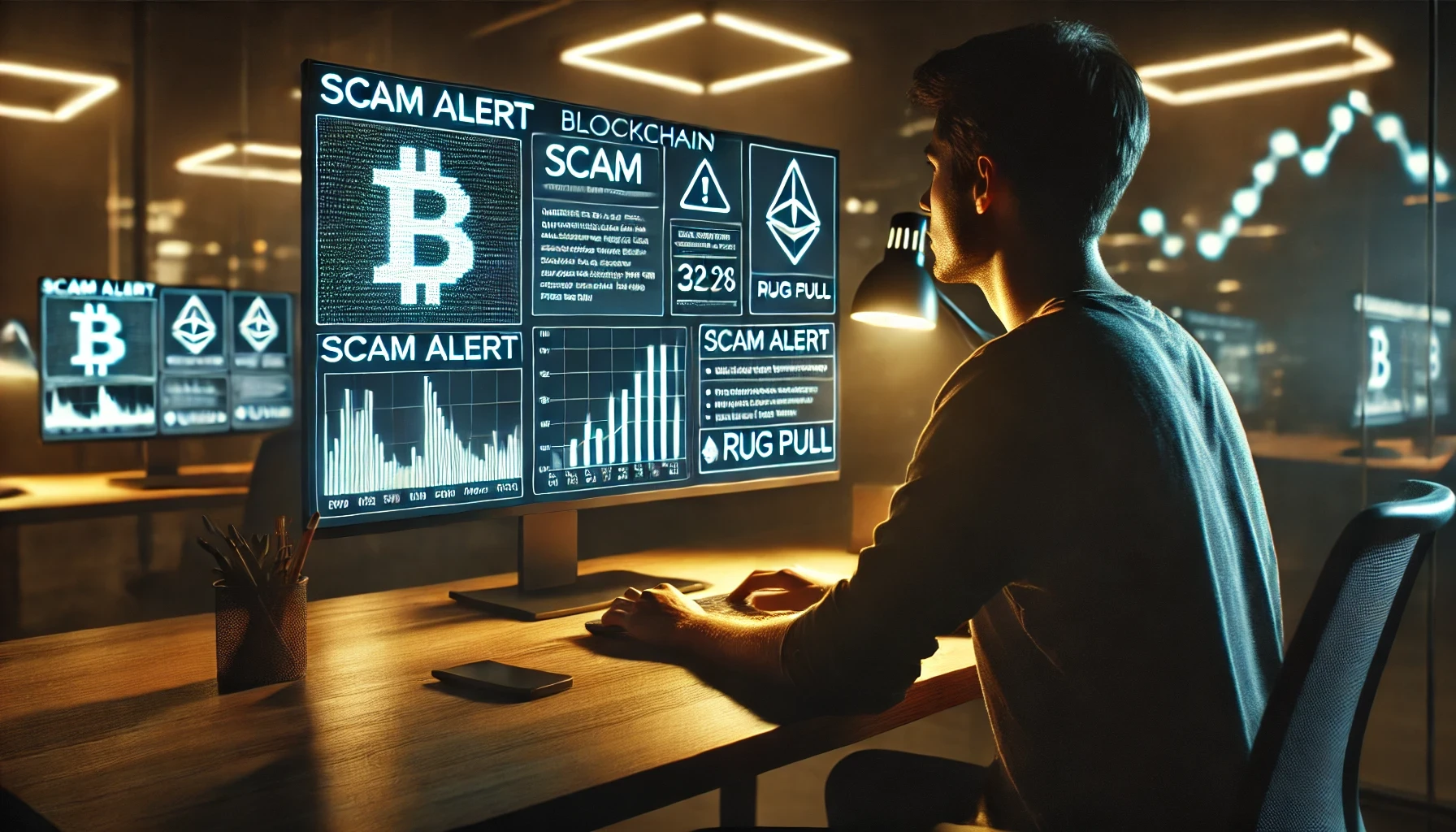1. What Is a Rug Pull?
A rug pull occurs when developers of a cryptocurrency or DeFi project suddenly abandon it after taking investors’ money. It’s a type of exit scam, often happening in projects with poorly audited or unaudited smart contracts.
Types of Rug Pulls
Liquidity Pull
Developers remove all liquidity from a decentralized exchange (DEX), making it impossible for investors to sell their tokens.
Pump-and-Dump
Developers artificially inflate the token’s price, sell their holdings at a profit, and leave the project.
Malicious Code in Smart Contracts
Developers add hidden functions in the code that allow them to siphon funds or restrict token transfers.
2. How Rug Pulls Work
Launch of a New Project
A team releases a token or DeFi project with promises of high returns and innovative solutions.
Build Hype
They use social media, influencers, and giveaways to attract investors.
Rapid Token Sales
Investors buy tokens, pushing up the price.
Exit Stage
Developers either sell their tokens or withdraw liquidity, leaving investors with worthless assets.
3. How to Spot a Rug Pull
a. Check the Project’s Team
Verify the identities of the developers. Anonymous or pseudonymous teams increase the risk of a rug pull.
Look for past projects and reputations.
b. Analyze the Token’s Liquidity
Ensure there’s sufficient liquidity locked in a smart contract for a specified duration.
Tools like Unicrypt or Team.Finance can confirm liquidity locks.
c. Audit the Smart Contract
Audited smart contracts reduce the risk of malicious code.
Trusted auditing firms include CertiK, Quantstamp, and Trail of Bits.
d. Evaluate the Tokenomics
Be wary of projects where developers hold a significant portion of the token supply.
Look for fair token distributions and transparent allocation plans.
e. Examine Community Engagement
Genuine projects have active, knowledgeable, and transparent communities.
Be cautious of overly hyped communities with little substance.
f. Avoid Unrealistic Promises
Be skeptical of projects offering guaranteed high returns or “risk-free” opportunities.
4. Steps to Protect Yourself
a. Do Your Own Research (DYOR)
Investigate the project’s whitepaper, roadmap, and use case.
Analyze its utility and value proposition.
b. Start Small
Test the waters with a small investment before committing significant funds.
c. Use Reputable Platforms
Stick to established exchanges and protocols with strong reputations.
d. Diversify Your Investments
Avoid putting all your funds into one project, especially if it’s new or unproven.
e. Monitor the Project Post-Investment
Watch for red flags, such as sudden changes in tokenomics, team departures, or suspicious updates.
5. Tools to Help Identify Rug Pulls
Token Sniffer: Analyzes token contracts for vulnerabilities.
DeFi Safety: Evaluates the safety and transparency of DeFi projects.
DappRadar: Provides insights into the performance and user activity of decentralized applications.
Etherscan/BSCScan: Lets you analyze wallet addresses, token contracts, and transactions.
6. Examples of Famous Rug Pulls
Squid Game Token (SQUID)
Capitalized on the popularity of the Netflix series and rug pulled after its price skyrocketed.
Meerkat Finance
Stole $31 million from Binance Smart Chain investors by exploiting their own smart contract.
7. The Future of Rug Pull Prevention
As DeFi grows, industry efforts are underway to mitigate rug pulls:
Improved Auditing Standards: More accessible audits to increase project transparency.
Regulations: Governments are beginning to introduce regulations to hold developers accountable.
Decentralized Insurance: Projects like Nexus Mutual offer coverage against smart contract exploits.
Conclusion
Rug pulls remain a significant threat in the cryptocurrency market, but with proper research, vigilance, and the right tools, you can minimize your risk. Remember, if something seems too good to be true, it probably is. Protecting yourself requires a cautious approach, critical thinking, and ongoing education. By staying informed and skeptical, you can navigate the crypto space safely and confidently.
